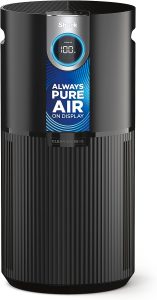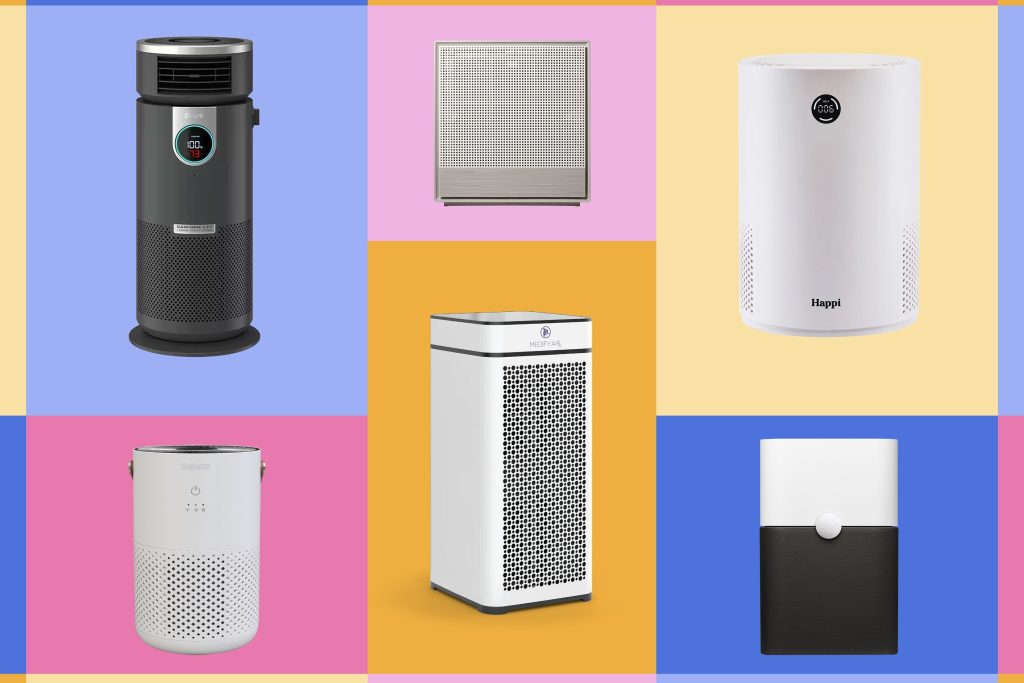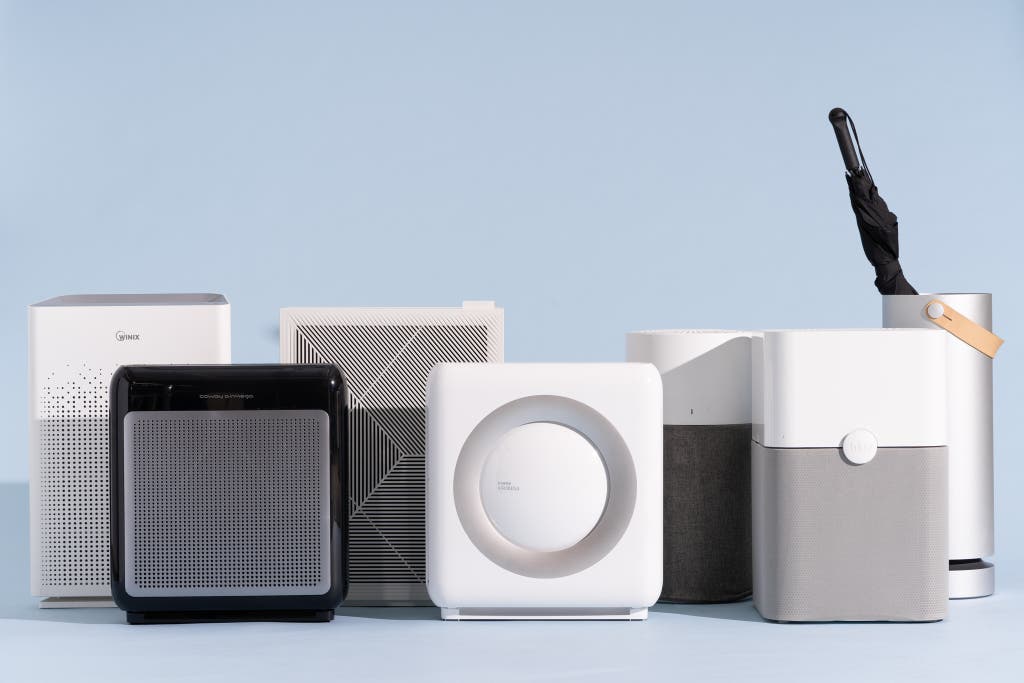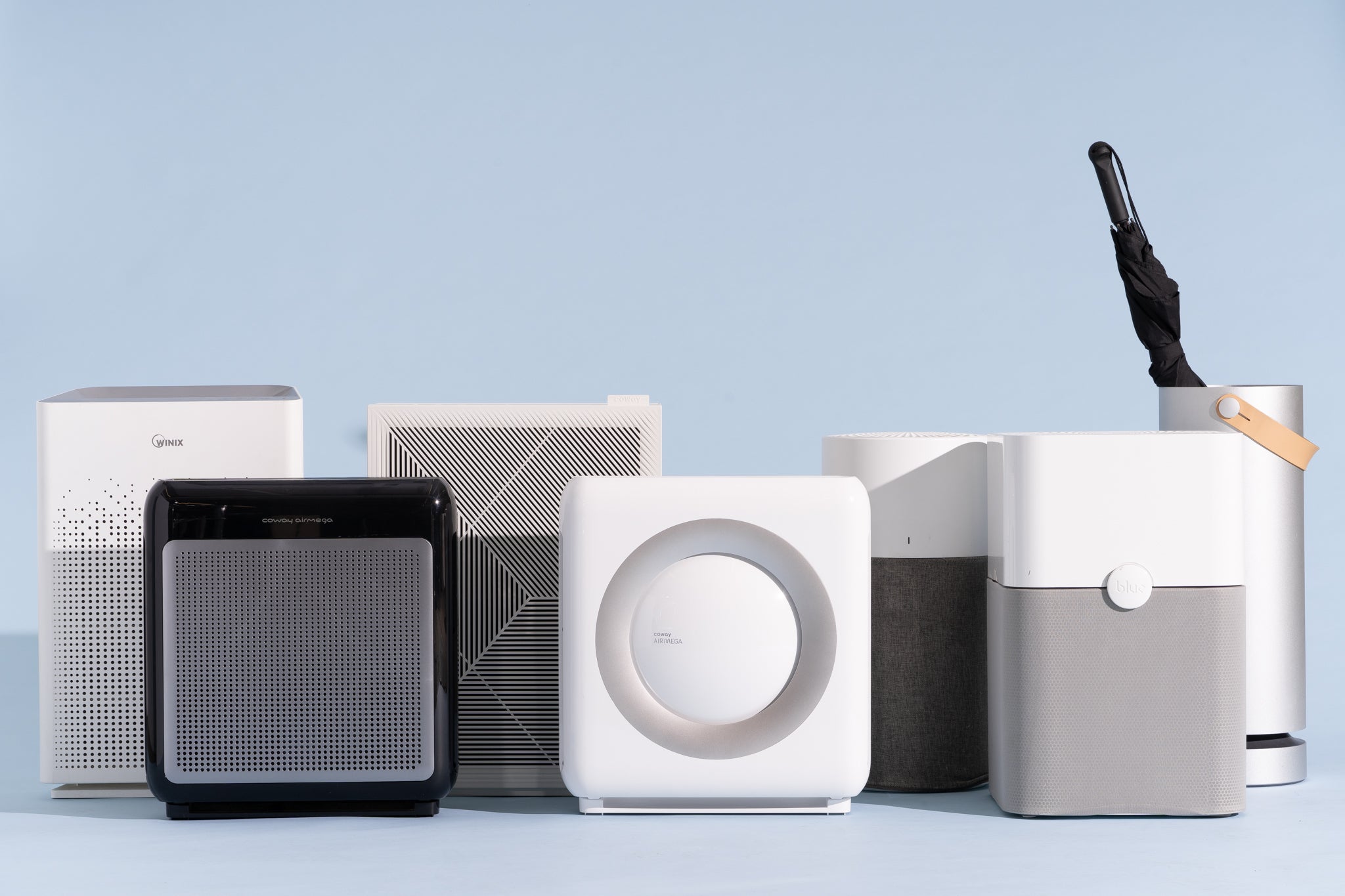You might be wondering whether there are any natural alternatives to conventional air purifiers in your search for cleaner and fresher indoor air. While there is no denying that air purifiers are efficient in removing irritants, allergens, and odors from the air, there are natural options that can also assist to enhance indoor air quality. The solutions covered in this article will help you create a healthier interior atmosphere without simply relying on air purifiers, from adding more plants to your area to regular ventilation and employing natural air filters. Let’s investigate these options in more detail and learn how to naturally bring fresh air into your home.

1. Introduction
Greetings from the realm of all-natural remedies for bettering indoor air quality! You’ve come to the correct place if you’re seeking for alternatives to using air purifiers just to improve the quality of the air you breathe. In this post, we’ll look at a variety of strategies for efficiently enhancing the quality of the air in your home, from salt lamps and houseplants to essential oils and ventilation methods. So let’s dive in and learn about the natural remedies that can make your home seem like a breath of fresh air!
2. Houseplants
2.1 Benefits of Houseplants
Did you know that houseplants may naturally purify the air in your home while also adding beauty and greenery? By removing dangerous chemicals from the air and releasing oxygen, these green wonders help you and your family live in a healthier atmosphere. Pollutants including formaldehyde, benzene, and trichloroethylene, which are frequently present in household goods and materials, can be eliminated by houseplants. They can also raise humidity levels, lessen dust levels, and even assist in lowering stress levels. You can genuinely bring the outdoors inside with houseplants and benefit from their inherent ability to purify the air.
2.2 Best Houseplants for Improving Indoor Air Quality
Certain species of houseplants are particularly effective at purifying the air when it comes to choosing plants to enhance indoor air quality. Some of the top indoor plants to think about are listed below:
- Spider Plant (Chlorophytum comosum): This resilient and easy-to-care-for plant removes formaldehyde and xylene from the air.
- Peace Lily (Spathiphyllum): Known for its elegant white blooms, the peace lily filters benzene, formaldehyde, trichloroethylene, and ammonia from the air.
- English Ivy (Hedera helix): This climbing vine is excellent at reducing airborne mold particles and eliminating formaldehyde.
- Snake Plant (Sansevieria trifasciata): With its upright, sword-like leaves, the snake plant is effective in removing toxins like benzene, xylene, and formaldehyde.
- Aloe Vera (Aloe barbadensis): Apart from its healing properties, aloe vera also purifies the air by eliminating formaldehyde and benzene.
You may not only enhance the air quality in your home by adding these houseplants, but you can also make it more serene and aesthetically pleasing.
3. Essential Oils
3.1 Benefits of Essential Oils
Essential oils are a great choice if you’re looking for a natural method to improve your health and clean the air. Essential oils are extracted from a variety of plants and flowers and contain aromatic chemicals that can improve both physical and mental health. Many essential oils not only have a pleasant aroma, but they also contain antibacterial qualities that can help get rid of airborne bacteria and viruses. Essential oils are a useful addition to any indoor area since they can improve mood, lessen stress, and encourage better sleep in addition to their ability to filter the air.
3.2 Essential Oils for Improving Indoor Air Quality
Several possibilities stand out when it comes to using essential oils to enhance indoor air quality. Here are a few well-liked options:
- Tea Tree Oil: Known for its potent antiviral, antibacterial, and antifungal properties, tea tree oil can help cleanse the air and eliminate airborne pathogens.
- Eucalyptus Oil: With its refreshing and invigorating scent, eucalyptus oil has decongestant properties that can help clear the airways and promote easier breathing.
- Lavender Oil: Renowned for its relaxing and calming effects, lavender oil can help reduce stress and anxiety while providing a pleasant aroma in your living space.
- Peppermint Oil: Along with its refreshing scent, peppermint oil has antimicrobial properties that can help purify the air and promote alertness and focus.
- Lemon Oil: This zesty and uplifting oil has powerful cleansing properties that can freshen the air and create a vibrant ambiance in your home.
You can use diffusers, make your own room sprays, or even incorporate a few drops of essential oils into your cleaning supplies to reap their advantages. To improve the quality of the air within your home naturally, use high-quality oils and use them sensibly.
4. Salt Lamps
4.1 Benefits of Salt Lamps
In addition to their cosy glow, salt lamps have grown in popularity lately due to their potential to enhance indoor air quality. These lamps release negative ions that can balance out positive ions in the air because they are made from pure Himalayan salt crystals. Numerous health advantages of negative ions have been demonstrated, including the reduction of allergies, elevation of mood, and improvement of general wellbeing. Salt lamps are a distinctive and priceless addition to any living space since they may produce a calming atmosphere and serve as natural air cleaners.
4.2 Effectiveness in Improving Indoor Air Quality
Although salt lamps release negative ions that may enhance indoor air quality, their ability to significantly improve the air quality is still up for debate. While some studies claim that salt lamps can improve the quality of the air, others contend that their impact may be insignificant in comparison to other air purification techniques. It’s vital to remember that salt lamps should only be used as a supplementary approach in conjunction with other natural alternatives, not as the exclusive means of air purification. In addition to cleansing the air in your home, salt lamps may also make it feel cozy and inviting by bringing a bit of nature inside.

5. Beeswax Candles
5.1 Benefits of Beeswax Candles
Beeswax candles provide a natural and healthier alternative to traditional paraffin candles for those who appreciate the warm ambience and soft flicker of candlelight. Bees create beeswax naturally, which has a number of benefits over conventional candles. Beeswax is a renewable resource, as opposed to paraffin, which comes from petroleum. Similar to salt lamps, beeswax candles emit negative ions into the air as they burn. These negative ions improve the overall air quality in your home by lowering allergens, pollutants, and odors. Additionally, beeswax candles burn cleaner, longer, and with less soot while still giving off a light aroma of honey.
5.2 How Beeswax Candles Help Improve Indoor Air Quality
Beeswax candles produce negative ions during combustion, which draw in and balance out positively charged airborne particles. Dust, pollen, mold spores, and other allergens are some examples of these particles. Beeswax candles can aid in the relief of respiratory conditions, improve the quality of the indoor environment, and lower the amount of these airborne irritants. Beeswax candles, in contrast to paraffin candles, do not emit hazardous compounds when burned, making them a safer alternative for anyone with sensitivities or allergies.
Beeswax candles must be prepared from 100% pure beeswax, preferably obtained through sustainable and ethical beekeeping practices, in order to fully benefit from its air-purifying properties. You may create a calming and purified ambiance in your house using these natural candles.
6. Activated Charcoal
6.1 Benefits of Activated Charcoal
A chemical recognized for its capacity to capture and remove toxins and impurities is activated charcoal, which is extremely porous and adsorbent. It frequently appears in a variety of uses, such as air and water filtration. Activated charcoal may effectively remove volatile organic compounds (VOCs), smells, and other pollutants from the air when used to enhance indoor air quality, resulting in a cleaner and healthier atmosphere. It is a potent natural remedy for lowering indoor air toxins and improving the freshness of your home.
6.2 Using Activated Charcoal to Improve Indoor Air Quality
Placing activated charcoal in thoughtfully selected spots around your home is one method to use it to enhance indoor air quality. Choose tiny containers packed with activated charcoal and put them next to areas that could produce pollutants, including the kitchen, bathroom, or rooms where dogs are kept. The contaminants will be absorbed and trapped by the activated charcoal, aiding in air purification. To keep the charcoal functioning properly, keep in mind to replace it frequently.
Utilizing air filters or purifiers with activated charcoal is a further common choice. These items include activated charcoal granules or pellets that can be added to ventilation systems or air purifiers. The activated charcoal in the device traps and eliminates pollutants as the air passes through it, giving you and your family cleaner air.
It’s critical to use high-quality activated charcoal made expressly for air filtration when employing activated charcoal for this reason. This will guarantee maximum efficiency and the best outcomes for enhancing the quality of the air inside your home.

7. Baking Soda
7.1 Benefits of Baking Soda
The versatile household staple sodium bicarbonate, usually referred to as baking soda, has several uses besides cooking. It works well as a cleaning agent and can also enhance indoor air quality. Baking soda is a natural deodorizer and air freshener because of its capacity to absorb odors and neutralize volatile chemicals. You may contribute to making your house seem more pleasant and odor-free by using baking soda in a variety of ways.
7.2 Utilizing Baking Soda for Improving Indoor Air Quality
There are various ways to use baking soda’s air-cleaning abilities:
- Air Freshener: Create a DIY air freshener by combining baking soda with a few drops of your favorite essential oil. Mix well and place the mixture in a small container or sachet. This homemade air freshener will help absorb odors and release a pleasant scent into the air.
- Carpet Deodorizer: Sprinkle baking soda liberally on your carpets and let it sit for a few hours or overnight. Baking soda will absorb odors, and you can simply vacuum it up to remove the trapped impurities, leaving your carpets refreshed.
- Refrigerator Odor Eliminator: Place an open container of baking soda in your refrigerator or freezer to absorb unwanted odors. Replace the baking soda every few months to maintain its effectiveness.
- Room Deodorizer: Fill a bowl with baking soda and place it in any room to help neutralize odors. This simple trick can freshen the air naturally, reducing the need for chemical-based air fresheners.
8. Himalayan Pink Salt
8.1 Benefits of Himalayan Pink Salt
An excellent type of salt called Himalayan pink salt is sourced from old salt mines close to the Himalayas. Magnesium, potassium, and calcium are just a few of the minerals and trace ions that give this unprocessed salt its distinctive pink color. Himalayan pink salt can be utilized in a variety of ways to improve skin health, enhance culinary flavor, and even have a favorable effect on indoor air quality. Its organic qualities make it an intriguing choice to take into account for developing a better living environment.
8.2 Using Himalayan Pink Salt to Enhance Indoor Air Quality
Using salt lamps is one method of utilizing Himalayan pink salt for enhancing indoor air quality, as was previously noted. The negative ions generated by salt can potentially improve air quality by neutralizing positive ions and lowering the amount of airborne contaminants. Salt lamps’ pleasant glow also helps to soothe the environment.
Himalayan pink salt can be used in various ways besides salt lamps to improve the air quality in your house. Similar to salt lamps, salt candle holders or salt blocks can assist provide an effect that releases negative ions and may have air-purifying effects. Additionally, Himalayan pink salt crystal inhalers, which are tiny vials filled with the salt, can be used to enhance respiratory health and encourage clearer breathing.
It’s critical to select premium, genuine salt items when adding Himalayan pink salt to your home. Despite the intriguing potential advantages of Himalayan pink salt, it should be utilized as part of a comprehensive strategy to enhance indoor air quality as there is now little scientific evidence to substantiate its effects.

9. Ventilation
9.1 Importance of Proper Ventilation
Proper ventilation is a critical component that shouldn’t be disregarded when thinking about strategies to improve indoor air quality. Fresh air is circulated, stale air is expelled, and pollutants, moisture, and odors are removed thanks to good ventilation. When indoor air isn’t properly ventilated, contaminants can build up, humidity levels rise, and mold and mildew can start to form because of the increased humidity. The general comfort of your home is increased by proper ventilation, which also contributes to the maintenance of clean, healthy air.
9.2 Tips for Improving Indoor Air Quality through Air Purifiers
Here are some pointers for improving the quality of indoor air through ventilation:
- Open Windows: Whenever weather permits, open windows to allow fresh air to circulate into your home. This can help flush out stagnant air and replace it with clean outdoor air.
- Use Exhaust Fans: Utilize exhaust fans in kitchens and bathrooms to remove moisture, steam, and odors. These fans help prevent the buildup of humidity and pollutants, reducing the risk of mold growth and improving air quality.
- Cross-Ventilation: Take advantage of natural airflow by strategically opening windows and doors in different areas of your home to create a cross-breeze. This allows for fresh air to move through the space, enhancing ventilation and reducing indoor air pollutants.
- HVAC System Maintenance: Regularly maintain and clean your heating, ventilation, and air conditioning (HVAC) system to ensure proper functioning and efficient air circulation. Replace filters as recommended by the manufacturer to prevent the buildup of dust, allergens, and other airborne particles.
You may improve the quality of the air you breathe and create a healthier living environment by putting these ventilation strategies into effect.
10. Natural Cleaning Products
10.1 Benefits of Natural Cleaning Products
It’s critical to take cleaning product effects into account when working to improve indoor air quality. The harsh chemicals used in many conventional cleaning products can release volatile organic compounds (VOCs) into the air, resulting in poor indoor air quality and possible health problems. An alternative that is safer and healthier is to use natural cleaning supplies.
10.2 Recommendations for Using Natural Cleaning Products to Improve Indoor Air Quality
Here are some tips for enhancing indoor air quality when cleaning with natural products:
- Read Labels: When purchasing cleaning products, carefully read the labels to ensure they are free from harmful chemicals, fragrances, and artificial additives. Look for products that are labeled as “natural,” “eco-friendly,” or “non-toxic.”
- DIY Cleaning Recipes: Consider making your own cleaning products using simple and natural ingredients like vinegar, baking soda, lemon juice, and essential oils. There are numerous DIY cleaning recipes available that can effectively clean and freshen your home without releasing harmful substances into the air.
- Ventilation While Cleaning: Whenever you clean, whether using conventional or natural products, ensure proper ventilation by opening windows or using exhaust fans. Ventilating the area helps prevent the buildup of cleaning fumes and allows for fresh air circulation.
- Microfiber Cloths: Opt for microfiber cleaning cloths instead of disposable paper towels. Microfiber cloths effectively trap dust and dirt without the need for chemical cleaners, reducing the release of airborne particles during cleaning.
You may promote a healthier living environment for you and your family by using natural cleaning products or manufacturing your own. By doing so, you can reduce your exposure to dangerous chemicals and enhance indoor air quality.
In conclusion, there are a number of all-natural alternatives to air purifiers that can significantly enhance the quality of indoor air. You may create a fresher, cleaner, and healthier indoor environment by introducing houseplants, essential oils, salt lamps, beeswax candles, activated charcoal, baking soda, and Himalayan pink salt into your daily life. So, embrace nature’s strength and the advantages it provides for improving the air you breathe. Your lungs will be grateful.

Recommendations: Welov Air Purifiers for Home Large Room

